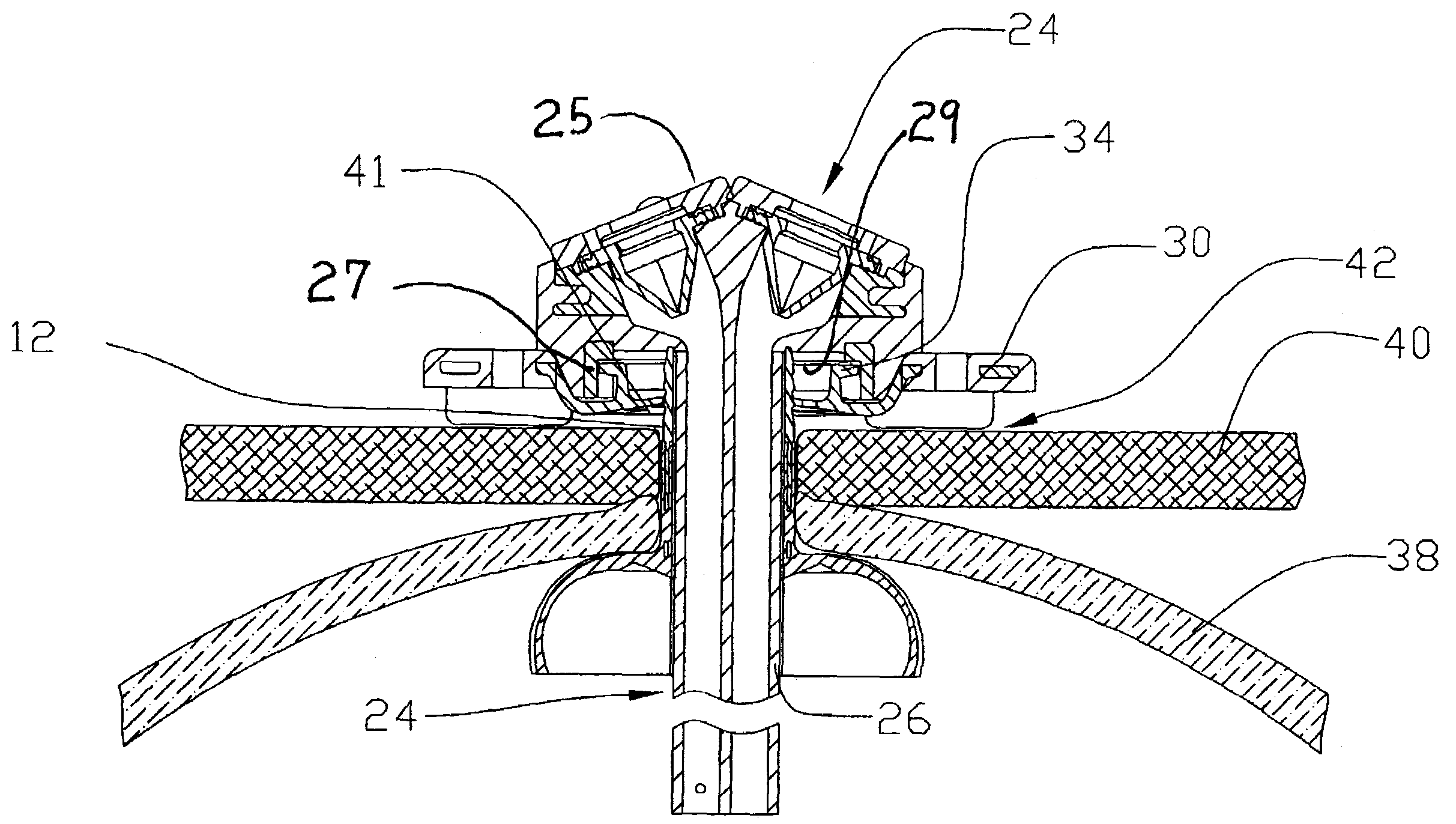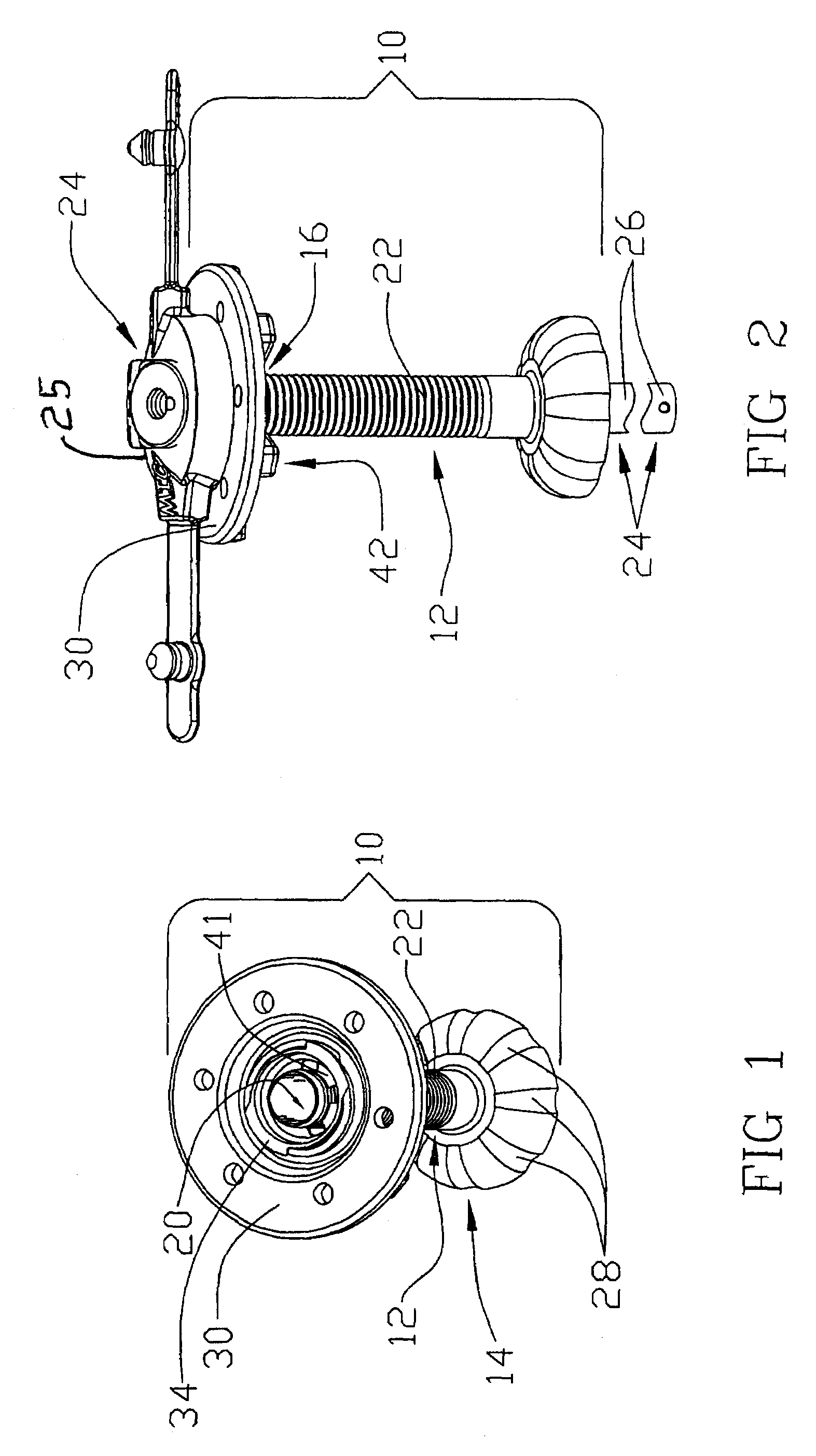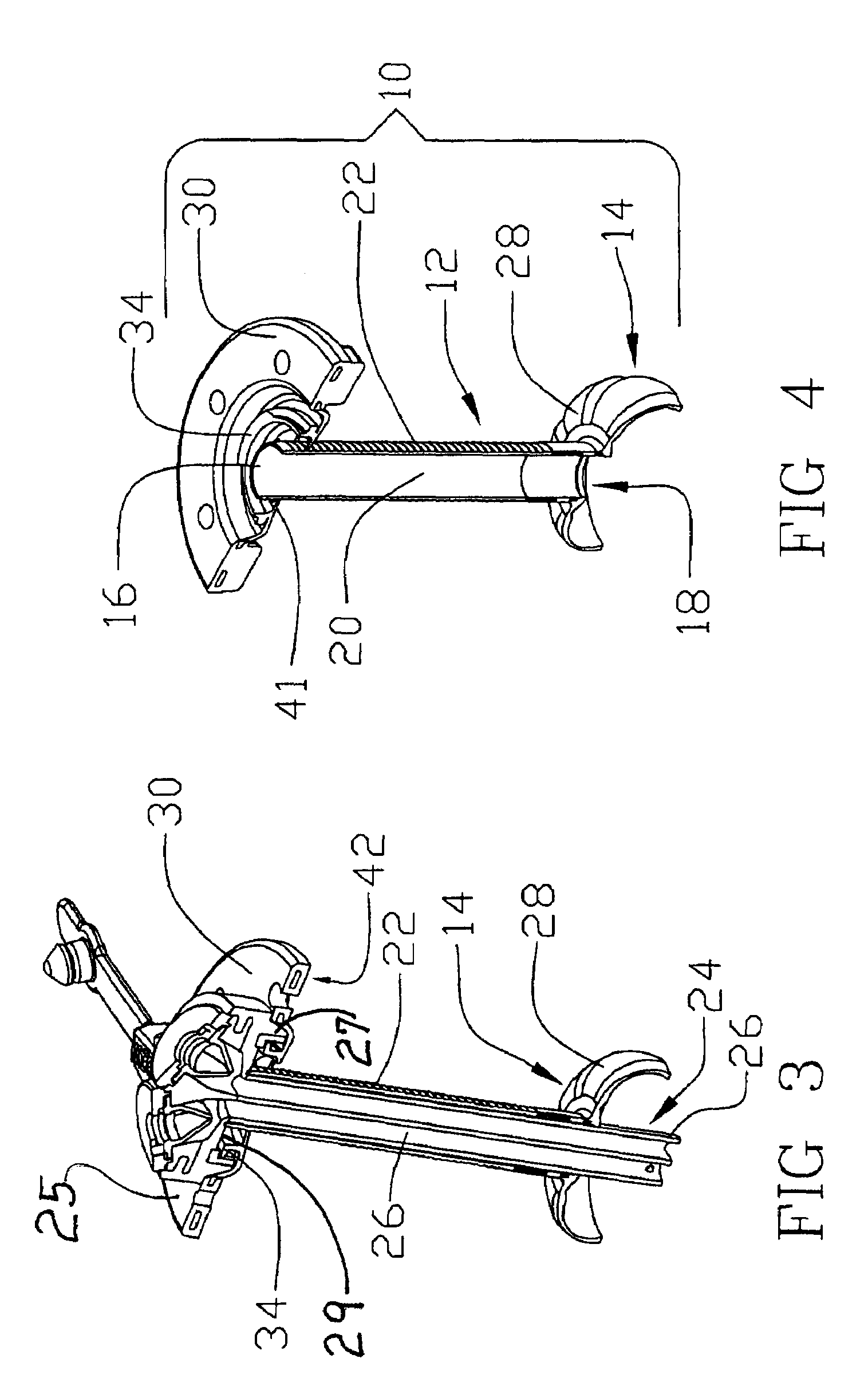Artificial stoma and method of use
a technology of artificial stoma and stoma, which is applied in the field of artificial stoma and method of use, can solve the problems of undesirable catheter slippage or sliding within the patient, irritation of the stoma site, and further complicated process of establishing a stoma and enteral feeding, so as to minimize or prevent liquid flow through the tube, minimize or avoid fluid leakage, and prevent or minimize liquid flow. the effect of flow
- Summary
- Abstract
- Description
- Claims
- Application Information
AI Technical Summary
Benefits of technology
Problems solved by technology
Method used
Image
Examples
Embodiment Construction
[0024]Reference will now be made in detail to one or more examples of the invention depicted in the figures. Various elements of the present invention will be given numeral designations and the invention will be discussed so as to enable one skilled in the art to make and use the invention. It should be appreciated that each example is provided by way of explaining the invention, and not as a limitation of the invention. For example, features illustrated or described with respect to one aspect may be used with another aspect to yield still a further aspect. These and other modifications and variations are contemplated to be within the scope and spirit of the invention.
[0025]In addition, the invention will be described in the context of its various configurations. It should be appreciated that alternative arrangements of the invention can comprise any combination of such configurations. As such, the use of a desired aspect for ease in understanding and describing the invention shall ...
PUM
 Login to View More
Login to View More Abstract
Description
Claims
Application Information
 Login to View More
Login to View More - R&D
- Intellectual Property
- Life Sciences
- Materials
- Tech Scout
- Unparalleled Data Quality
- Higher Quality Content
- 60% Fewer Hallucinations
Browse by: Latest US Patents, China's latest patents, Technical Efficacy Thesaurus, Application Domain, Technology Topic, Popular Technical Reports.
© 2025 PatSnap. All rights reserved.Legal|Privacy policy|Modern Slavery Act Transparency Statement|Sitemap|About US| Contact US: help@patsnap.com



